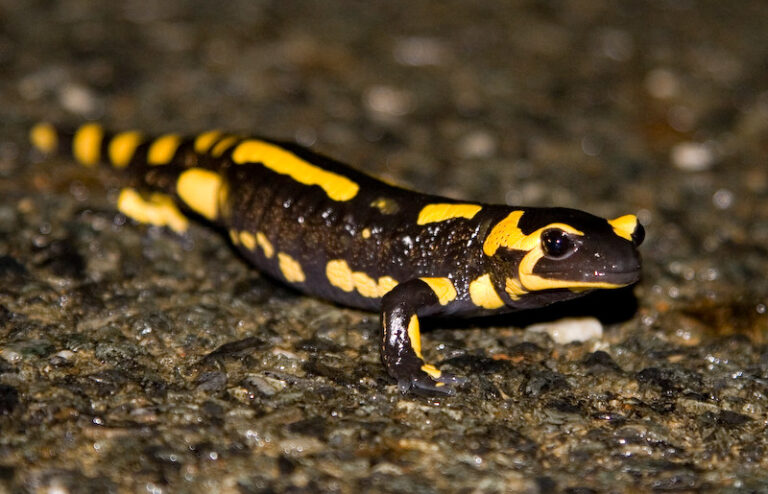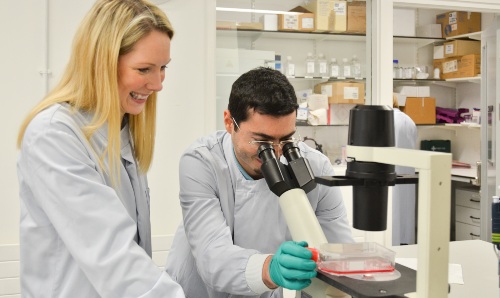A new year approaches and with it, thoughts of change, transformation and even regeneration. But if you’re Professor Sarah Cartmell, thoughts of regeneration are simply business as usual.
Last month, we spoke to Steve Pettifer, Professor of Computer Science at the Department of Computer Science, about his work developing a treatment for phantom limb pain. Prof Pettifer has developed a virtual reality program that allows people to see an image of their missing limb, which can help to alleviate any pain or discomfort they are experiencing.
But what if humans could simply grow a new limb to replace the one they lost? It sounds like science fiction – but one day it might just be possible.
Out on a limb

In fact, limb regeneration is science fact – at least in amphibians. Take a salamander – if it loses its leg, it is able to grow another. It can even regenerate a lost eye, jawbone or tail, as well as some internal organs. The same phenomenon is seen in lizards and certain sea stars. If you take a look at even smaller creatures, such as certain flatworms, total bodily regeneration is possible.
For Prof Cartmell, Professor of Bioengineering and Head of the Department of Materials, it’s simple – if amphibians can do it then so can humans. “With more research to increase our understanding, I don’t know why not,” she says.
And she should know. For some time, Prof Cartmell has been researching something integral to human life – electricity. Indeed, it is electricity that can stimulate skin, muscle and even bone growth, and that may provide the answer to bone regeneration in humans.
“Most people don’t realise there is an electrical regime throughout the body,” she explains. “Rather than being one big battery, we’re full of mini batteries that differ for each body part.”
Take the skin, for example. It’s made up of different layers – the epidermis, the dermis and the hypodermis – and each layer has a different charge. When the skin is wounded by a cut that goes deep into the tissue, the electric charge is disrupted and a current forms around the cut. “This is an important part of the healing process of the cut, as it is integral to the regeneration of the skin,” Prof Cartmell notes.
Bright sparks

Electricity has been commonplace in medicine for close to 100 years. From electroconvulsive therapy used to treat mental health disorders, to defibrillation to restart the heart, to the TENs machines we use to treat pain, electricity is an integral part of healthcare. Where things get complicated is that different outcomes require different electrical stimuluses – and each different tissue has a different voltage.
When cut, our skins regenerates in order to heal. However, while an amphibian can regenerate a whole limb, in mammals the tissue begins to regenerate but the process is then taken over by fibrosis – more commonly known as scarring – that leaves the regeneration incomplete.
“As all species share a certain amount of DNA, in humans the regeneration process after a loss of a limb is identical to that of an amphibian,” says Prof Cartmell. “But then mammalian DNA takes over and the limb forms a stump.”
The future of regenerative medicine

So if a salamander can regrow a lost limb, why can’t we? One reason is that cell regeneration is more likely to occur when the cells themselves are young.
Let’s say a child loses the very tip of their finger in an accident. While you might imagine that the first course of action is to find the lost fingertip and pack it in ice to be reattached, the other option is to wait for the fingertip to regrow.
“Keeping [the wound] wet allows an ionic flow to continue and the charged particles to flow around the edge of the wound, leading to full generation of the fingertip,” says Prof Cartmell (although please don’t let that stop you getting yourself, your kid and their fingertip to A&E pronto in the event of such an unfortunate incident!).
The fact is, bone regrowth is possible in humans – it’s just a lot more complicated than in salamanders.
Bone regeneration is at the very crux of Prof Cartmell’s research. Working in the lab, she and her team have successfully grown tissue that can then be implanted in the patient to replace or repair the lost or damaged tissue.
It’s a method that could see us one day having a lot more in common with salamanders. For example, Prof Cartmell is optimistic that within the next two decades, a doctor will not choose to use a metal-on-plastic hip joint (an artificial joint that commonly needs replacing every 10 to 15 years) for a patient undergoing hip replacement surgery, but instead one made from lab-grown biological tissue. For a population that’s aging, this type of regenerative medicine could be revolutionary.
So, might humans one day be able to regrow lost organs and limbs? Prof Cartmell is cautious but optimistic. “As a scientist, I hate making sweeping statements … but it happens with amphibians,” she says. Well, if a salamander can do it!
Liked this? Then be sure to subscribe on our homepage to keep up to date with all the latest posts from The Hub.
Words – Hayley Cox
Images – The University of Manchester, Paddy Benson, Carling Hale
